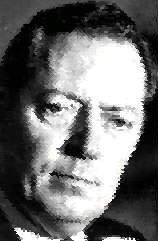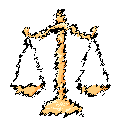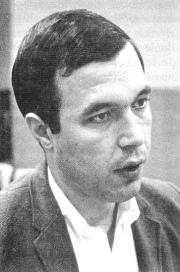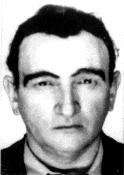 NEW ORLEANS, AND THE GARRISON INVESTIGATION
https://www.washingtonpost.com/archive/opinions/1991/05/19/on-the-set-dallas-in-wonderland/0c958035-3fc2-48a7-a108-da0855c92a94/
https://www.onthetrailofdelusion.com/post/did-delphine-roberts-see-oswald-in-banister-s-office
NEW ORLEANS, AND THE GARRISON INVESTIGATION
https://www.washingtonpost.com/archive/opinions/1991/05/19/on-the-set-dallas-in-wonderland/0c958035-3fc2-48a7-a108-da0855c92a94/
https://www.onthetrailofdelusion.com/post/did-delphine-roberts-see-oswald-in-banister-s-office
Fred Litwin’s recent book On the Trail of Delusion, documents the lunacy of the Garrison investigation, along with attempts to rehabilitate the New Orleans DA, with a plethora of heretofore unseen primary source documents. Many of these documents can be found online on Litwin’s blog.
![]() Conspiracy books routinely claim that Oswald had an office at 544
Camp Street in New Orleans, and that this was the "same address"
occupied by Guy Banister's detective agency. This, supposedly, is
evidence tying Oswald to Banister, Ferrie, and the anti-Castro
Cubans. When the House Select Committee examined this issue in the late 70s, they found little solid evidence to place Oswald at that location. More recent research by Dave Reitzes shows that an office at 544 Camp Street was never more than a notion in the head of Lee Harvey Oswald.
Conspiracy books routinely claim that Oswald had an office at 544
Camp Street in New Orleans, and that this was the "same address"
occupied by Guy Banister's detective agency. This, supposedly, is
evidence tying Oswald to Banister, Ferrie, and the anti-Castro
Cubans. When the House Select Committee examined this issue in the late 70s, they found little solid evidence to place Oswald at that location. More recent research by Dave Reitzes shows that an office at 544 Camp Street was never more than a notion in the head of Lee Harvey Oswald.
![]() Lee Harvey Oswald was in the Civil Air Patrol as a youth in New Orleans. This raises the possibility that David Ferrie knew Oswald. Many conspiracy books imply that some sinister relationship between the two started at this time. The House Select Committee on Assassinations examined this issue, and this is their report. Does it suggest the possibility that Ferrie knew Oswald? Is there any evidence of a close relationship between the two?
Lee Harvey Oswald was in the Civil Air Patrol as a youth in New Orleans. This raises the possibility that David Ferrie knew Oswald. Many conspiracy books imply that some sinister relationship between the two started at this time. The House Select Committee on Assassinations examined this issue, and this is their report. Does it suggest the possibility that Ferrie knew Oswald? Is there any evidence of a close relationship between the two?
![]() Unlike Roberts, the Clinton witnesses have been believed by otherwise skeptical investigators like the House Select Committee and Norman Mailer. During and since the Clay Shaw trial, they have told a consistent and apparently sincere story of Lee Oswald, Clay Shaw, and David Ferrie visiting Clinton, Louisiana one day in 1963 in a big black car.
But what if you look at the Clinton witnesses' early statements, before they were influenced by repeated questioning and repeated exposure to pictures of Oswald, Shaw, and Ferrie?
Unlike Roberts, the Clinton witnesses have been believed by otherwise skeptical investigators like the House Select Committee and Norman Mailer. During and since the Clay Shaw trial, they have told a consistent and apparently sincere story of Lee Oswald, Clay Shaw, and David Ferrie visiting Clinton, Louisiana one day in 1963 in a big black car.
But what if you look at the Clinton witnesses' early statements, before they were influenced by repeated questioning and repeated exposure to pictures of Oswald, Shaw, and Ferrie?
There is little doubt the Clinton witnesses are telling the truth as they now recall it. However, their original statements to Garrison's staff reveal considerable contradictions, so much so that the very heart of their story is invalidated . . . . It was almost six years after the alleged incident in Clinton that the witnesses first testified at the Garrison trial. Garrison's staff, when questioning the Clinton witnesses, had only presented photos of Oswald, Ferrie and Shaw, and incorrectly said that others had already identified those as the people who had visited the town. This power of suggestion, and later coaching, developed the testimony that today has been repeated so often that the House Select Committee found it so convincing.Dave Reitzes is in general agreement with Posner's thesis, but notes several factual errors that detract from Posner's presentation.
![]() Garrison's entire case was based on the belief that Clay Shaw, using the alias "Clay Bertrand" conspired to kill Kennedy. Where did the name "Clay Bertrand" come from? From an eccentric, rather sleazy New Orleans lawyer named Dean Andrews. Here is an account, abstracted from Kirkwood's American Grotesque, of Andrew's ever-changing testimony.
Garrison's entire case was based on the belief that Clay Shaw, using the alias "Clay Bertrand" conspired to kill Kennedy. Where did the name "Clay Bertrand" come from? From an eccentric, rather sleazy New Orleans lawyer named Dean Andrews. Here is an account, abstracted from Kirkwood's American Grotesque, of Andrew's ever-changing testimony.
![]() It is often claimed that Clay Shaw admitted to using the "Clay
Bertrand" alias when he signed a fingerprint card during his booking
in New Orleans. The card, listing the alias, was produced by the
Garrison prosecution. Did Shaw admit to the alias by signing the
card? Examine an account of
the prosecution's attempt to have the card entered into evidence in
the Shaw trial (taken from American Grotesque). Did Officer Habighorst tell the truth?
It is often claimed that Clay Shaw admitted to using the "Clay
Bertrand" alias when he signed a fingerprint card during his booking
in New Orleans. The card, listing the alias, was produced by the
Garrison prosecution. Did Shaw admit to the alias by signing the
card? Examine an account of
the prosecution's attempt to have the card entered into evidence in
the Shaw trial (taken from American Grotesque). Did Officer Habighorst tell the truth?
Lou Ivon: No "Clay Bertrand"Like the FBI in 1963, Garrison's researchers combed the French Quarter for "Clay Bertrand," the man Dean Andrews said had called him on the day after the assassination and suggested that Andrews go to Dallas to legally represent Oswald. What was the result? The following memo was written by Garrison's chief investigator, Lou Ivon.
Ivon was not the only Garrison staffer to reach this conclusion. Assistant DA Andrew "Moo-Moo" Sciambra was given the task of "squeezing" the French Quarter to get information from homosexual informants. He admitted to author Edward Jay Epstein that he failed to find any "Bertrand." See Epstein's The Assassination Chronicles (New York, 1992), p. 196. |

In the two years between the Shaw hearing and the trial, Garrison's staff interviewed hundreds of would-be witnesses. There are certain sensational cases that have a fascination for unstable people and fetch them forth in droves. A classic example was the "Black Dahlia" mutilation murder of playgirl Elizabeth Short in Los Angeles. Over the years, dozens of people came forward and confessed to this crime, which still remains unsolved. Celebrated cases also attract witnesses who are not psychotic, but who falsely identify key figures out of faulty memory or a desire to lift themselves out of dull anonymity into the spotlight. Chief Justice Frankfurter once commented that eyewitness testimony is the greatest single cause of miscarried justice. In a sensational case, a careful prosecutor often spends more time winnowing out false witnesses than he does working with authentic ones.Not surprisingly, only a tiny handful of Garrison's witnesses had enough credibility to take the stand at the Shaw trial, and most of these were discredited by the defense. Phelan goes on to discuss a few typical ones. Other, more important ones included:The Garrison investigation had a disastrously low threshold, across which trooped a bizarre parade of people eager to bolster his conspiracy scenario. (Scandals, Scamps, and Scoundrels, p. 169)
A States-Item reporter, who has spent more time than most listening to Jack Martin talk, describes him "as one of the most interesting men I ever have met."Jack Martin was well-known in New Orleans, and uniformly regarded as unreliable. Not surprisingly, Garrison never put Martin on the stand."He is as full of that well known waste material as a yule hen. On the other hand, he is many times a very competent investigator who has the friendship and confidence of reputable, well-placed individuals. He drinks, often to excess, but bears no real evidence of being an alcoholic. He desperately wants to be loved, and this is his downfall. Often, he wants to please everyone, everywhere so damn much that he ends by hurting the people who have befriended him. He must be taken with a grain of salt leavened by a grain of confidence. If you listen to him for two hours, often you will receive two minutes of useful information. I suppose, to sum him up, he is like a muddy river. You have to use a very fine filter."
Rosemary James & Jack Wardlaw, Plot or Politics?, p. 48.

|
![]() Another thing that supposedly linked Clay Shaw to sinister forces was his membership on the Board of Directors of an Italian operation called "Permindex." Conspiracy books all claim that that Permindex was a CIA front. They fail to tell the full story, however, as to where this "information" comes from. The reality was exposed in a classic article in the British journal Lobster. A more recent, and definitive, treatment of this issue by journalist Max Holland appeared in the journal Studies in Intelligence.
Another thing that supposedly linked Clay Shaw to sinister forces was his membership on the Board of Directors of an Italian operation called "Permindex." Conspiracy books all claim that that Permindex was a CIA front. They fail to tell the full story, however, as to where this "information" comes from. The reality was exposed in a classic article in the British journal Lobster. A more recent, and definitive, treatment of this issue by journalist Max Holland appeared in the journal Studies in Intelligence.
![]() Jim Garrison had a skill that has been seldom noted.
He was a cryptographer! This passage, from Epstein's Counterplot,
shows how he applied his cryptographic abilities to the prosecution of
Shaw. It's hilarious, if you can forget that Clay Shaw's life was ruined by this sort of "logic." Other examples of Garrison's bizarre behavior include:
Jim Garrison had a skill that has been seldom noted.
He was a cryptographer! This passage, from Epstein's Counterplot,
shows how he applied his cryptographic abilities to the prosecution of
Shaw. It's hilarious, if you can forget that Clay Shaw's life was ruined by this sort of "logic." Other examples of Garrison's bizarre behavior include:
| Clinical Psychopathology? In 1952, Jim Garrison was relieved of duty in the National Guard. Doctors at the Brooke Army Hospital in Texas diagnosed him as suffering from a "severe and disabling psychoneurosis" which "interfered with his social and professional adjustment to a marked degree." The evaluation further said that Garrison "is considered totally incapacitated from the standpoint of military duty and moderately incapacitated in civilian adaptability," and recommended long-term psychotherapy. See Case Closed, p. 423. In 1986, Patricia Toole interviewed Garrison, and asked him about various authors who had written books on the Kennedy assassination. See what he says about Tony Summers' Conspiracy and Henry Hurt's Reasonable Doubt. This interview is from the files of the AARC in Washington, DC. |
![]() The ranks of conspiracy believers have long been split by different attitudes toward Garrison. Many important conspiracy authors (Tony Summers, Henry Hurt, David Lifton) believe Garrison to have been reckless and irresponsible. Yet Garrison has a vocal cadre of supporters among conspiracy buffs. An e-mail feud took place in August 1995 between David Lifton, who had seen Garrison's antics first-hand, and Garrison supporters Gary Aguilar and Lisa Pease. Lifton's view of Garrison:
The ranks of conspiracy believers have long been split by different attitudes toward Garrison. Many important conspiracy authors (Tony Summers, Henry Hurt, David Lifton) believe Garrison to have been reckless and irresponsible. Yet Garrison has a vocal cadre of supporters among conspiracy buffs. An e-mail feud took place in August 1995 between David Lifton, who had seen Garrison's antics first-hand, and Garrison supporters Gary Aguilar and Lisa Pease. Lifton's view of Garrison:
I think its ugly when the power of the state is arrayed against an innocent man — and the witchhunt that took place in New Orleans back in 1967-69 will always remain exactly that: an ugly incident in the annals of jurisprudence . . .In spite of the current popularity of Garrison in conspiracy circles, most mainstream conspiracist authors have blasted Garrison and his New Orleans "investigation."
| "He went from a highly intelligent eccentric to a lunatic in the period of one year. . . . Every time press interest in the case would start to wane, he would propound a new theory. One week it would be 14 Cubans shooting from storm drains. The next week it would be H. L. Hunt and the far right in Dallas. This was no Robin Hood — no Untouchable either." Rosemary James in Newsweek, 12/23/91. |
|
Notes on interview with Jim Garrison, District Attorney, New Orleans — 1:00 to 4:00 P.M. at Criminal Courts Building, New Orleans. Also present part time: Louis IVON, Garrison's Chief Investigator.Walter Sheridan, of course, was one of the journalists who took a critical stance toward Garrison and his "investigation." The notes also say "Sheridan — No good Bastard — Compared him with Nazis."Garrison was extremely interested in our wiretap investigation. Feels strict legislation is very necessary. Says he only uses it against "guys like Sheridan." Feels his office and home phones are tapped by the Bureau but doesn't care.
![]() When Perry Raymond Russo took the stand during the preliminary
hearing at the Shaw trial, he told a story radically different from
the one he told Sciambra in Baton Rouge (see above). Journalist
James Phelan confronted Garrison with the discrepancy, and a meeting
at Garrison's house followed. This passage, from American Grotesque, describes that meeting —
which resulted in investigator William Gurvich defecting from the
Garrison team. When he wrote On the Trail of the Assassins Garrison denigrated Gurvich, and claimed he had only a marginal role in the investigation. In reality, Gurvich was an important figure at the center of the probe.
When Perry Raymond Russo took the stand during the preliminary
hearing at the Shaw trial, he told a story radically different from
the one he told Sciambra in Baton Rouge (see above). Journalist
James Phelan confronted Garrison with the discrepancy, and a meeting
at Garrison's house followed. This passage, from American Grotesque, describes that meeting —
which resulted in investigator William Gurvich defecting from the
Garrison team. When he wrote On the Trail of the Assassins Garrison denigrated Gurvich, and claimed he had only a marginal role in the investigation. In reality, Gurvich was an important figure at the center of the probe.
![]() The House Select Committee on Assassinations interviewed Gurvich in 1978. Gurvich gives a fascinating insider's account of Garrison the man and the Garrison investigation.
The House Select Committee on Assassinations interviewed Gurvich in 1978. Gurvich gives a fascinating insider's account of Garrison the man and the Garrison investigation.
![]() James Phelan himself started out as an "insider" — a friend of Garrison's on the basis of a very favorable article he had written about the DA in the Saturday Evening Post. But when Garrison carelessly gave Phelan documents that blew the case against Shaw entirely out of the water,
Phelan concluded that Garrison's case was fraudulent, as he explained in an article in the Saturday Evening Post.
James Phelan himself started out as an "insider" — a friend of Garrison's on the basis of a very favorable article he had written about the DA in the Saturday Evening Post. But when Garrison carelessly gave Phelan documents that blew the case against Shaw entirely out of the water,
Phelan concluded that Garrison's case was fraudulent, as he explained in an article in the Saturday Evening Post.
![]() Edward Jay Epstein was trained as a Political Scientist, but early on moved to journalism with a critique of the Warren Commission titled Inquest. When Garrison's investigation became public he, like many buffs, went to work for Garrison as a volunteer. In the wake of Garrison's death in 1992 he described his experiences in "Epitaph For Jim Garrison: Romancing the Assassination" in the New Yorker.
Edward Jay Epstein was trained as a Political Scientist, but early on moved to journalism with a critique of the Warren Commission titled Inquest. When Garrison's investigation became public he, like many buffs, went to work for Garrison as a volunteer. In the wake of Garrison's death in 1992 he described his experiences in "Epitaph For Jim Garrison: Romancing the Assassination" in the New Yorker.
![]() Tom Bethell was an Englishman who was in New Orleans to write a book on Dixieland Jazz. When the Garrison investigation broke, he got caught up in the enterprise. Working as a staffer for Garrison, he gained an unique perspective on Garrison, the evidence, other Garrison staff members, conspiracy buffs, and reporters covering the trial. Here is his diary, obtained from the National Archives.
Tom Bethell was an Englishman who was in New Orleans to write a book on Dixieland Jazz. When the Garrison investigation broke, he got caught up in the enterprise. Working as a staffer for Garrison, he gained an unique perspective on Garrison, the evidence, other Garrison staff members, conspiracy buffs, and reporters covering the trial. Here is his diary, obtained from the National Archives.

|
![]() In the 1970s, Bethell wrote an article for the Washington Monthly that summarized his experiences with the Garrison investigation and offered some cogent comments on the intellectual habits of the conspiracy "researchers."
In the 1970s, Bethell wrote an article for the Washington Monthly that summarized his experiences with the Garrison investigation and offered some cogent comments on the intellectual habits of the conspiracy "researchers."
![]() Garrison's key witness implicating Shaw in a conspiracy to murder Kennedy was Perry Raymond Russo, but Russo's testimony was elicited during "truth serum" and hypnosis sessions. When Garrison turned over the transcripts of the hypnosis sessions to the House Select Committee on Assassinations in 1977, he doctored them to conceal the fact that Russo told about Shaw conspiring only in response to a highly leading question.
Garrison's key witness implicating Shaw in a conspiracy to murder Kennedy was Perry Raymond Russo, but Russo's testimony was elicited during "truth serum" and hypnosis sessions. When Garrison turned over the transcripts of the hypnosis sessions to the House Select Committee on Assassinations in 1977, he doctored them to conceal the fact that Russo told about Shaw conspiring only in response to a highly leading question.

|
Primary Sources on Garrison
Real historical research is done from "primary sources" — the original documents, transcripts, testimony and so on that are the earliest and closest reflection of the historical event. People who want to study the Garrison investigation are immensely lucky that researcher Dave Reitzes has an ongoing interest in — indeed, almost an obsession with — the topic. His "Perpetual Pages" web site has an impressive collection of primary sources on Garrison, as well as the trial transcript of the Clay Shaw trial in New Orleans. And Fred Litwin has assembled a massive collection of sources on Garrison in writing his book On the Trail of Delusion, which documents the lunacy of the Garrison investigation with a plethora of heretofore unseen primary source documents. Many of these documents can be found online on Litwin’s blog. |
If such a campaign existed, the internal CIA documents describing it should make fascinating reading. And indeed, author Max Holland has discovered several key documents outlining the CIA's reaction to the Garrison probe. The Agency's response to Garrison, however, is rather different from the one claimed by the conspiracists.
Garrison and the MafiaAlthough Garrison was willing to include the CIA, the FBI, the Federal government, and just about everybody else you can imagine in his assassination conspiracy, one group was conspicuously missing: the Mafia. Garrison's good relations with various Mafia figures might have something to do with this. When the House Select Committee on Assassinations quizzed Garrison on the possibility of a Mafia connection, and particularly about New Orleans Mafia chieftan Carlos Marcello, Garrison replied as follows: When asked if he believed Marcello was a man capable of having President Kennedy murdered, Garrison did not directly answer the question. Garrison stated that he has "certainly heard" that Marcello may have once been involved in some kind of criminal activity years ago. He stated that he has some reason to believe that some of Marcello's money was obtained through criminal acts many years ago. Garrison further stated that he has heard of allegations linking Marcello to organized crime and the Mafia, but does not know if they are true. He stated that he has heard over the years that Marcello may be a man of significant wealth, and may in fact be one of Louisiana's wealthier citizens. He stated that Marcello is not active in real estate and is a businessman.You may wish to read the entire interview. In his book On the Trail of the Assassins, Garrison is no more forthcoming. The periodic allegations that I am on friendly terms with organized crime figures are amusing, in light of my record . . . .So it seems the District Attorney who claimed to have solved the crime of the century was unable to discover that top New Orleans mob boss Marcello was part of the Mafia! |